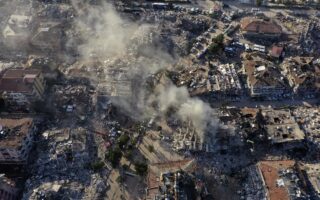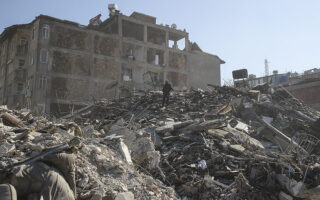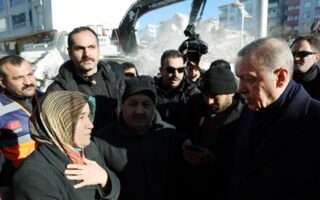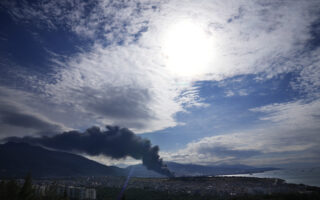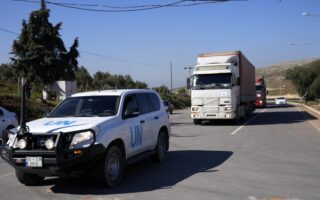Turkey’s earthquake through the eyes of an award-winning AP photojournalist
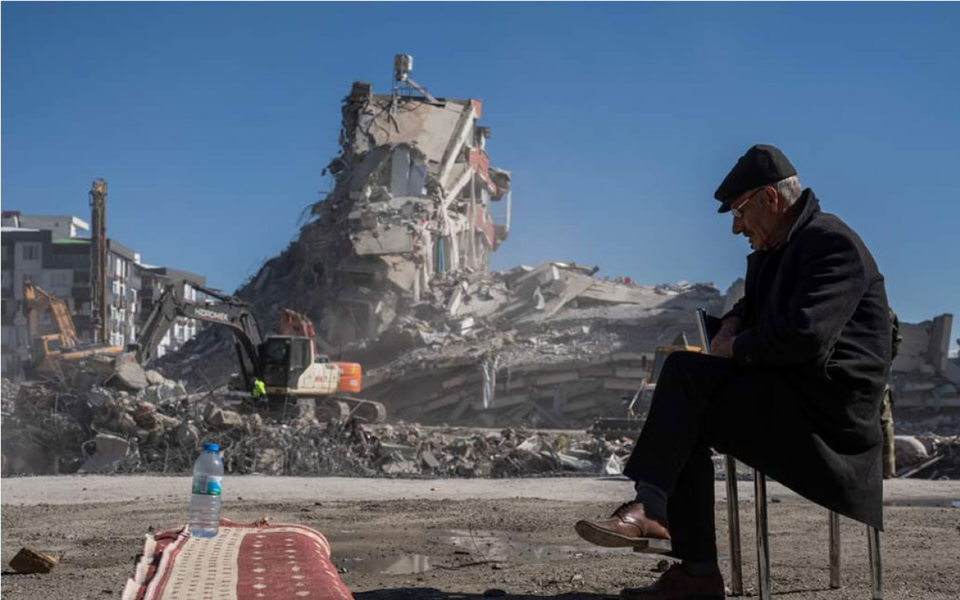
“What has shaken me is the inconceivable scale. Huge destruction. And, as always, the greatest the destruction, the deeper the pain,” Petros Giannakouris, a photojournalist with news agency Associated Press, told Kathimerini Friday from Iskederun, Turkey.
He is quick to point out that what he says may sound cliché and that the conditions and images are what is expected after such a huge tremor. But, “however many times you experience them, you still get the same shock and awe,” the experienced camera man adds.
This phone call took place as Giannakouris was recording a rescue operation of five people buried under the ruins. Every so often, the rescuers, listening for signs of life, ask those witnessing the scene to keep quite; as a result, our conversation was interrupted a few times.
“Even so many days after the earthquake (that struck early Monday, February 6), there are realistic hopes that these five people will be rescued. There are signs of life,” Giannakouris says, adding that the Turkish rescue team believes they will be able to pull the rescue off by (Friday) night. “It sounds insane, but they keep trying [to find survivors],” he adds.
Giannakouris explained that the harshest images come from Kahramanmaras – the ancient Greek Germanicea – a city on a plateau close to Turkey’s southern coast: “You are really left wondering with the way the buildings have fallen; it’s as if somebody uprooted them. Apartment buildings that fell sideways or vertically. It is amazing how ‘aligned’ was their fall, as if they were cardboard boxes,” he said.
Giannakouris had also covered the Izmit earthquake in 1999, where about 18,000 people were killed after a tremor nearly as strong as last Monday’s. It was, in fact, his first assignment outside Greece.
“Then everything seemed to me so large-scale and so difficult. But, objectively speaking, things are far more chaotic now. The scale of the disaster does not compare.”
The fact that whole blocks of buildings have been flattened is widely attributed to poor construction quality. But, it is more than that, he says: the tremor was too strong.
Those residents who have lost loved ones are, unsurprisingly, disconsolate. “Those who ‘only’ lost their homes are better tethered to reality,” Giannakouris says.
Humanitarian aid and the many rescuers and NGOs active on the ground have a soothing effect for the shaken residents. “Private individuals improvise mass catering services to feed the residents and the rescue teams,” Giannakouris says.
We ask Giannakouris, if the aftermath of an earthquake resembeles a war, as he has covered wars extensively, with that in Ukraine his latest assignment.
“In war, people know what is happening. They know where trouble comes from and are sometimes prepared to face it. In an earthquake, it takes only a minute or to to suddenly lose your family and your home; there is no reason or rhyme; it’s the wrath of nature. But wars and earthquakes are similar because they are the worst situations hyumans can find themselves in; we can see this with our own eyes,” he says.
Despte this, Giannakouris wants to end the conversation on a positive note: “when you see people, and especially children, brought alive from under the ruins, everyone experiences relief for a while. They are encouraged, relieved. The sense that life prevails, after all and despite everything, is there.”
We asked him to comment on what he has chosen as his most evocative photos:
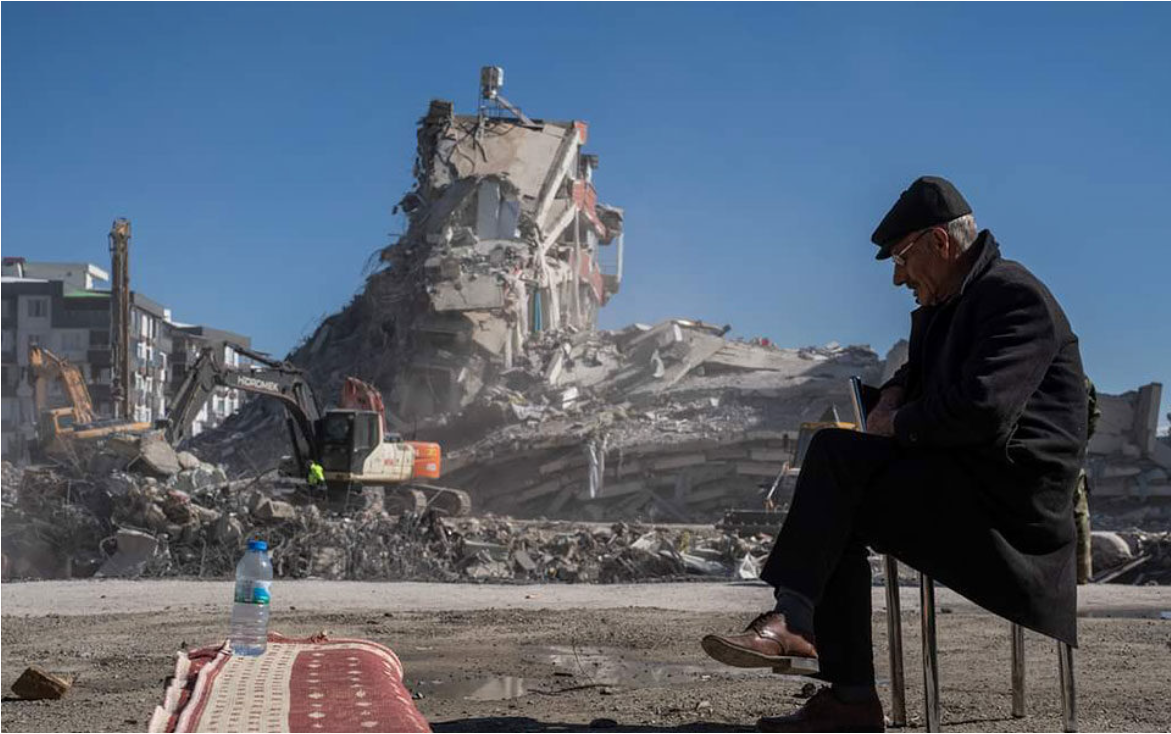
“An old grandpa sitting on a chair; his relatives are buried in the nearby ruins. No one would like to be in his place. It is emotion that prevails, not just harsh reality.”
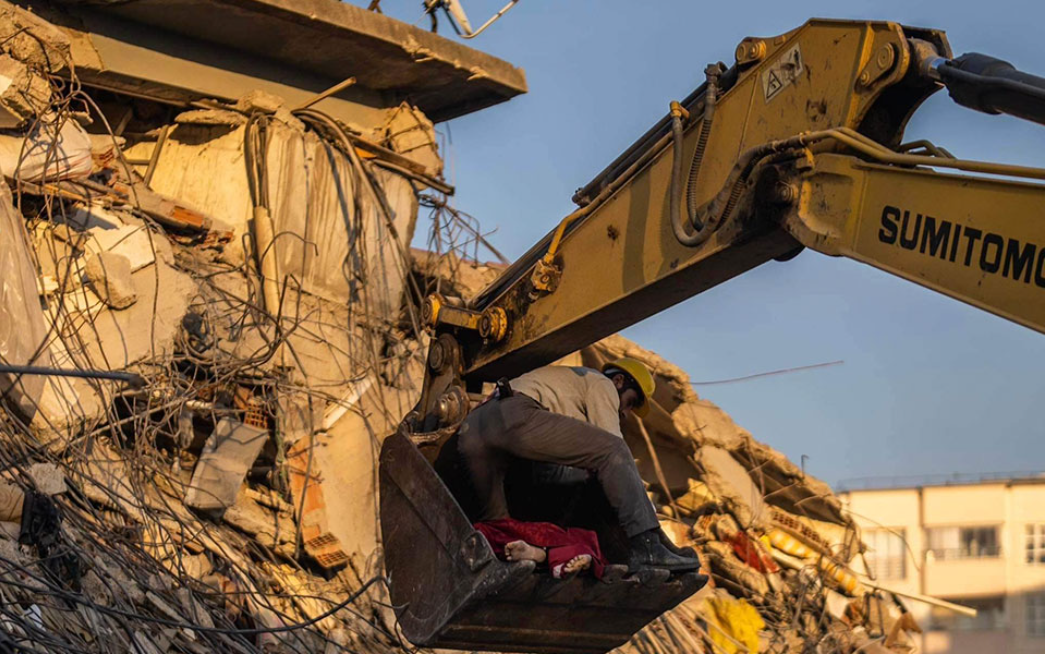
“This, a dead body inside the bulldozer’s blade, is what I mean by harsh reality. It is really tough to capture, but it is the reality [on the ground].”
